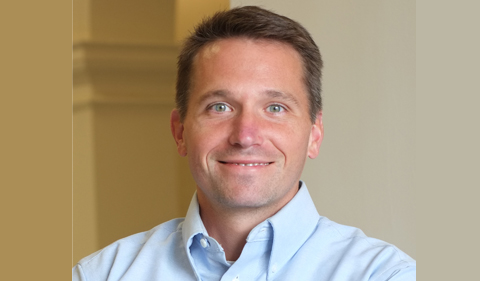
Dr. Derek Sawyer
The Geological Sciences Colloquium Series presents Derek Sawyer on “Earthquakes and Submarine Landslides on Continental Margins” on March 30 at 2 p.m. in Clippinger 205.
Sawyer is an Assistant Professor at the Ohio State University School of Earth Sciences.
Abstract: Earthquakes are a primary trigger of submarine landslides yet some of the most seismically active areas on Earth show a surprisingly low frequency of submarine landslides. Our recent work has explored this apparent paradox using shear strength measurements from 50 years of scientific ocean drilling over the world’s oceans. We find that within the uppermost 100 meters below seafloor sediment, active margins have elevated shear strength by a factor of 2-3 relative to the same interval on passive margins. The elevated shear strength is seen in a global survey of undrained shear strength with depth, as well as a normalized analysis that accounts for lithological and effective stress differences. These results indicate that large areas of modern day slopes on active margins have enhanced slope stability, which may help explain the relative paucity of landslides observed on active margins. The mechanisms that lead to the observed strengthening are not fully clear but they lend support to the seismic strengthening hypothesis that the repeated exposure to earthquake energy over time gradually increases shear strength by shear-induced compaction.
While the above discovery helps explain the relationship between earthquakes and submarine landslides in settings where slow, background sedimentation rate exists, we extend this analysis in a high-seismicity, high-sedimentation rate setting: the southern Alaskan offshore margin. The southern Alaskan offshore margin is prone to submarine landslides and tsunami hazards due to seismically active plate boundaries and extreme sedimentation rates from glacially enhanced mountain erosion. We examine recent shear strength measurements acquired by Integrated Ocean Drilling Program Expedition 341 on the continental slope and Surveyor Fan, the 4th largest submarine fan in the world. These data reveal lower-than-expected sediment strength. Contrary to other active margins where seismic strengthening enhances slope stability, the high-sedimentation submarine fan environment offshore southern Alaska behaves like a passive margin from a shear strength perspective. We interpret that seismic strengthening occurs but is offset by the high sedimentation rates and fluid overpressure within the slope and Surveyor Fan. This conclusion is supported because shear strength follows an expected active margin profile outside of the fan, where background sedimentation rates occur. More broadly, seismically active margins with wet-based glaciers are much more susceptible to submarine landslide hazards because of the combination of high sedimentation rates and earthquake shaking.
Upcoming Colloquia
Tom Darrah of The Ohio State University on April 13 at 2 p.m. in Clippinger 205.
James Lamsdell of West Virginia University on “Exploring environmental drivers of morphological change in horseshoe crabs and sea scorpions” April 20 at 2 p.m. in Clippinger 205.



















Comments